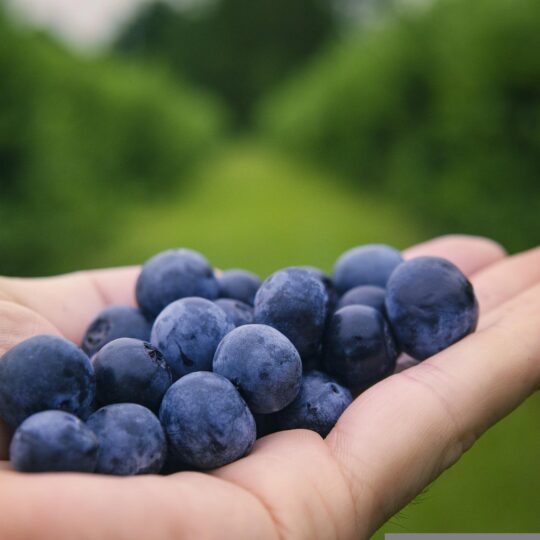
Oregon grows the second most blueberries out of any state in the country. There are over 1,000 farms growing blueberries on 13,500 acres. In 2020 they grew 154 million pounds. That’s 24% of the whole country’s blueberries! They were worth around 120 million dollars and were the 11th most valuable crop to the state. Oregon exports blueberries to many countries. Argentina, France, Italy, and Japan are just a few of those countries.1
A very long time ago, blueberries only grew wild in Oregon. The state has a climate and soil that blueberry plants grow very well in. Native Americans used blueberries for many things. They were for food and medicine. They were also used for dye.
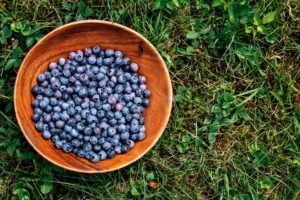
As time went on, blueberries began to be cultivated. They were grown and cared for purposefully. The best wild blueberries were chosen and bred to get the types we have today. Now there are many blueberry farms in the state. Some businesses do special processes with the berries. They can cool and freeze them fast for storage and shipping. This means Oregon blueberries can be sent across the world and be enjoyed by many people. Most blueberry farms and businesses are in the Willamette Valley.
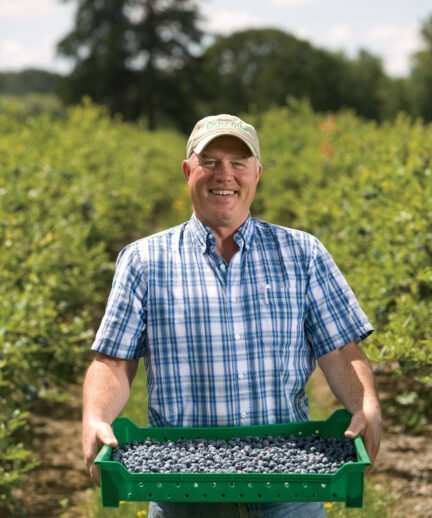
Northern highbush is the most common cultivar grown in Oregon and the world. These blueberries are native to the eastern and northeastern parts of the country. This cultivar grows from about 5 to 9 feet tall. Duke is one of the most popular varieties of Northern highbush. They are large blueberries that store and ship well. This makes them good for fresh market.
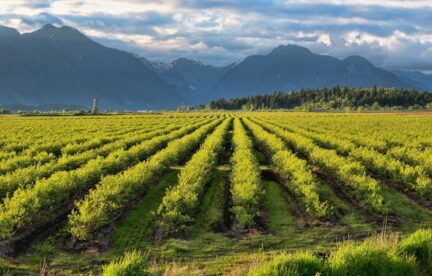
Southern highbush blueberries grow best in places with winters that aren’t too hot or too cold. Florida and California are good examples. They are usually 6-8 feet tall. Most blueberries lose their leaves in the winter. Southern highbush can be evergreen and keep their leaves. They can be grown in Oregon, but don’t produce very many blueberries.
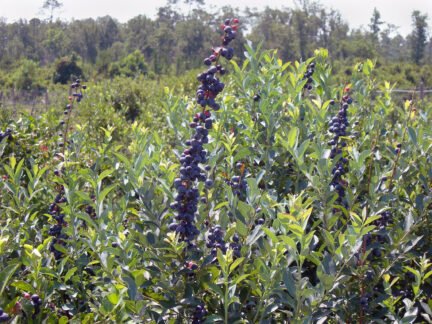
Rabbiteye blueberries are native to the southeastern part of the country. They can be grown in Oregon, but usually like more heat than the state has. They can grow up to 10 feet tall. Rabbiteye grown in Oregon is usually smaller than in other places. They grow best in the Willamette Valley instead of east of the Cascades. They ripen in late summer or fall.
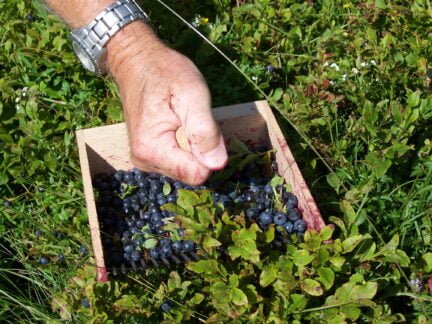
Lowbush cultivars are low, just like their name says. They usually aren’t even 2 feet tall. These blueberry plants come from places with cold winters. They are native to Minnesota and Canada. Lowbush blueberries do grow fruit but not as much because they are small. People sometimes plant them in Oregon as shrubs. They are decorative but grow a tasty treat.
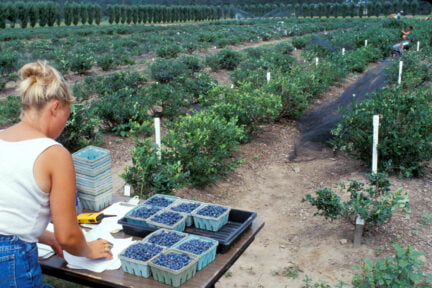
Half-high blueberries are called that because they are half highbush and half lowbush. The two types of cultivars were crossed to create the half-highs. They get to be about 3-4 feet tall. This type of blueberry can survive in colder temperatures than many others. This is because they are hardy plants. They are sometimes used in gardens and landscaping in Oregon.2
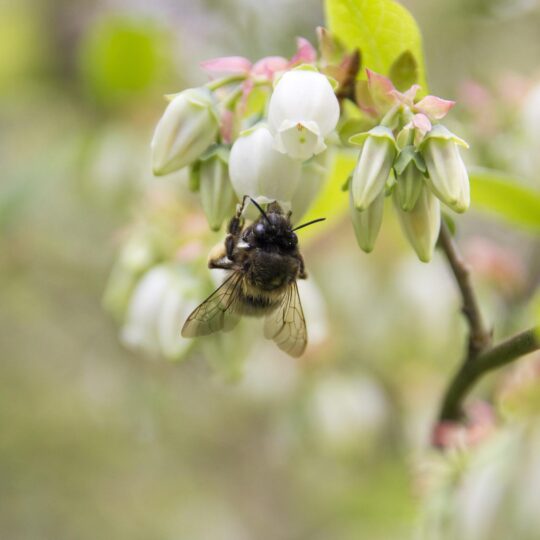
Blueberries are perennial plants that are usually planted into a field when they are 1-3 years old. They are grown in a nursery before that. Blueberry bushes are usually planted in the fall or spring. They are dormant in the winter and buds start to break on the branches in early spring.
Bloom and Pollination
Blueberry bushes bloom from late April to late May. Blueberries need to be pollinated to grow fruit. Some types have to be cross-pollinated, but not all. Farmers use honeybee hives to pollinate their fields. Usually 2-4 hives per acre. These honey bees visit flowers to collect nectar. As they collect nectar, they also collect pollen. That pollen ends up on the stigma of other flowers as the bees move around. Once they are pollinated the fruit will start to grow.3
Blueberry harvest can be from June through September. The harvest time is different for each variety. Some farms harvest blueberries by hand and some do it with machines. Most machine harvesters are tall and drive over the bushes. There are paddles that carefully shake and knock the berries off the bushes and onto a conveyor belt. They are then put into crates.
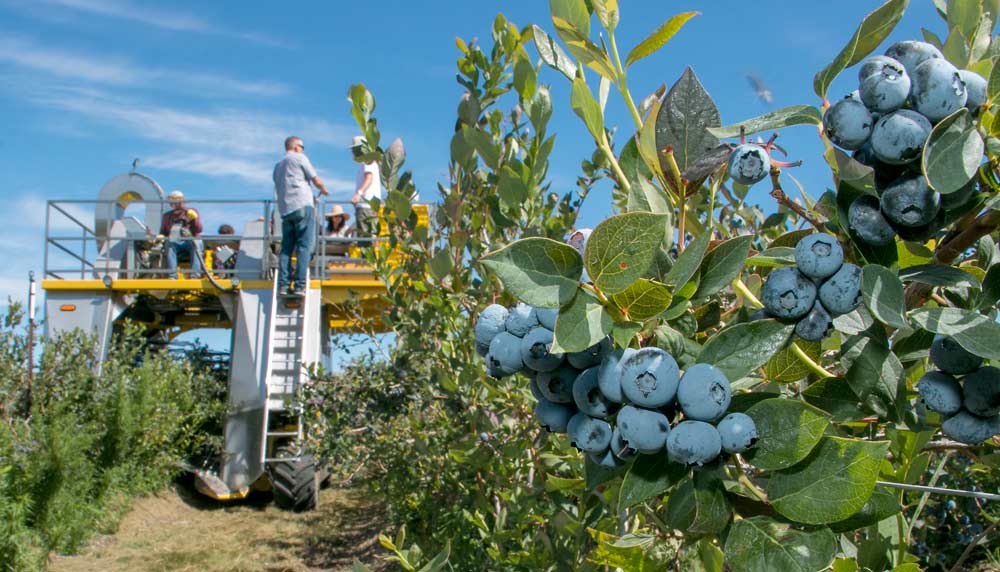
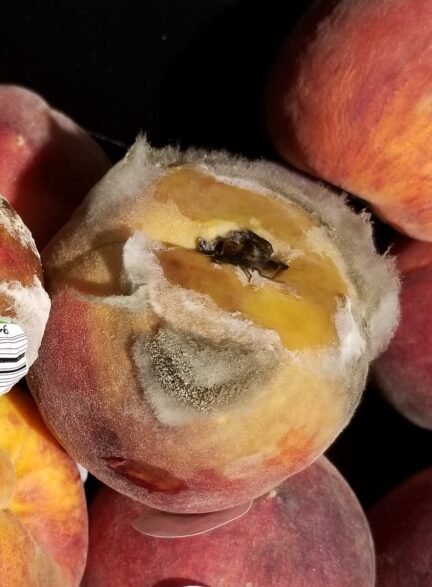
Botrytis is a fungus that spends the winter on dead twigs and weeds and unpicked blueberries. In the spring, botrytis spores are spread to other plants by wind and water. Blueberries are most likely to get infected while they are blooming. Botrytis can make growing berries rot and can prevent blooms from becoming blueberries. It can also damage the twigs and plants for more years.4
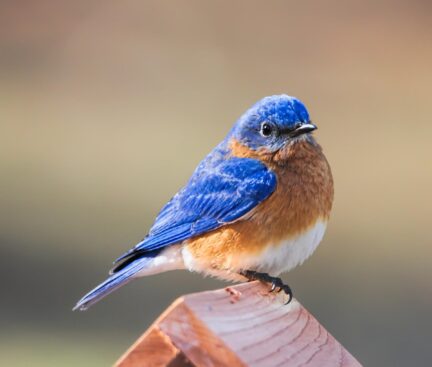
Birds are a main pest in blueberries. They can eat all of the berries from a field. Farmers use different ways to try to keep birds away. Sometimes they use shiny and flashy things to scare them off. Some farmers use noise-making machines. Nets or coverings over the blueberry plants are also used at times.
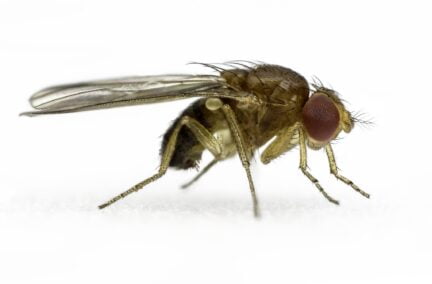
Spotted wing drosophila (SWD) is the worst insect that blueberry plants face. It showed up in Oregon in 2009 and quickly became a problem. It is small and looks like a fruit fly. Female SWDs lay eggs inside of fruit that is growing. The larvae eat the fruit from the inside while it’s getting ripe. One female SWD can lay hundreds of eggs during her 3-4 week life.5
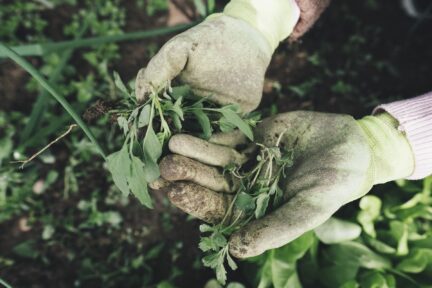
Weeds of any kind are bad for blueberries. Other plants can steal the water and soil nutrients that the blueberry plants need. By removing or preventing weeds, blueberry plants don’t have to compete. Some farmers remove weeds by hand. Sometimes they will spray herbicides to prevent weeds from growing. Weed mats can also keep other plants away.


Temperature, rain, and wind at a location over a period of years.
A moving strap that carries things from one place to another.
Using two plants to create a new plant with characteristics from both plants.
A variety of plant that has been selectively bred for desired characteristics.
To grow plants by plowing, weeding, or adding fertilizer.
Having green leaves that stay on a plant throughout the year.
To send to another country to sell.
Sold to be eaten fresh without freezing, cutting, or other changes.
Able to stand or live through harsh weather or bad conditions.
A substance used to kill or prevent unwanted plants.
An insect after it hatches from an egg and before it changes into an adult.
A plant that lives longer than two years.
The part of a plant that receives pollen.